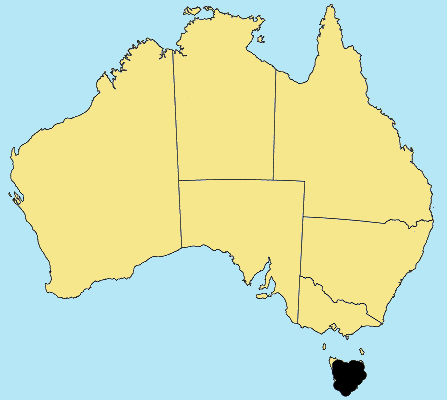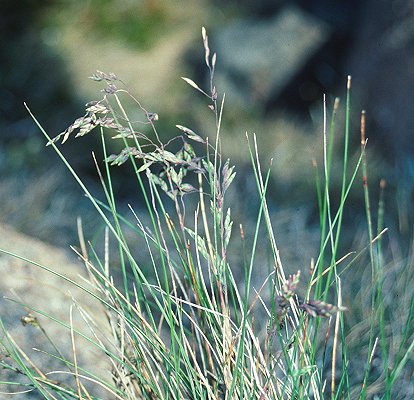Poa gunnii Vickery. Contr. New
South Wales Natl Herb. 4: 217–218 (1970).
Classification.
(GPWG 2001) : Subfamily Pooideae. Tribe Poeae.
Type of Basionym or
Protologue Information: Australia: Tasmania: Summit of Mt. Wellington: 7
Jan 1841, Gunn 1466 (HT: K; IT: NSW 45698).
Key references
(books and floras): [2002] D.Sharp & B.K.Simon, AusGrass, Grasses of
Australia, [2009] A.Wilson (ed.). Flora of Australia, Vol 44A. Poaceae
2 (327).
Habit.
Perennial. Stolons absent or present. Culms stature slender to delicate,
5–40(–70) cm tall, 1–2 -noded. Mid-culm nodes glabrous. Lateral branches
simple. Leaves mostly basal. Leaf-sheaths smooth or scaberulous, glabrous on
surface. Ligule a fringed membrane, a ciliolate membrane, 0.2–1.5 mm long,
abaxially scaberulous or abaxially hairy, truncate or obtuse. Leaf-blades
straight or curved, involute, 2–6.5(–30) cm long, 0.3–1 mm wide. Leaf-blade
surface smooth, glabrous.
Inflorescence.
Inflorescence compound, a panicle. Panicle elliptic, 3–8 cm long.
Spikelets.
Spikelets pedicelled. Fertile spikelets many flowered, with at least 2 fertile
florets (2–6), comprising 2–6 fertile floret(s), with diminished florets at the
apex, ovate, laterally compressed, 4.7–10 mm long.
Glumes. Glumes
similar. Lower glume oblong, membranous, keeled, 1-keeled, 1–3 -nerved. Upper
glume oblong, 2.2–3.4 mm long, membranous, keeled, 1-keeled, 3 -nerved.
Florets.
Fertile lemma 2.6–4.5 mm long, keeled, 5 -nerved. Lodicules present. Anthers 3.
Continental
Distribution: Australasia.
Australian
Distribution: Tasmania.
Tasmania: North
East, Central Highlands, Ben Lomond, East Coast, South West, Mt Field, Mt Wellington.
Notes.
A variable species, closely related to Poa costiniana.
Poa gunnii is described for Fl.
Victoria but no Victorian specimens examined are referrable to this
species.
Endemic. At altitudes
above 750 m in subalpine shrubbery or grasslands. Flowers Dec.-Apr. Fruits
Feb.-?.




